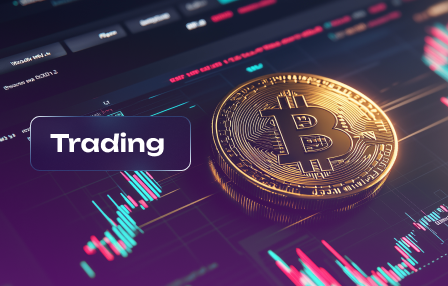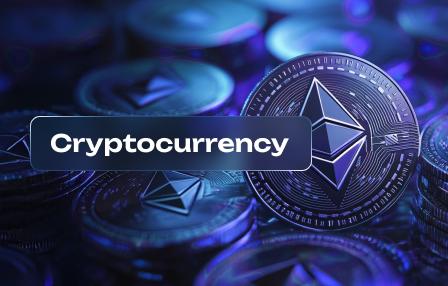The Future of OTC Crypto Trading in 2025 and Beyond
March 2, 2025
Adopt a proactive approach to transactions by leveraging advanced platforms that integrate blockchain solutions and enhance transparency. The upcoming period will witness a remarkable shift towards automated systems, allowing participants to execute orders swiftly while minimizing risks associated with counterparty defaults.
Innovation in technology will redefine how individuals interact with decentralized currencies. Expect the emergence of smart contracts that facilitate seamless execution without intermediaries, driving efficiency and reducing costs. Engaging with these tools will be essential for staying ahead in this competitive market.
Regulatory frameworks are on the horizon, aiming to establish standards that safeguard investors while promoting market integrity. Staying informed about compliance requirements will not only protect your investments but also position you as a leader in responsible asset management. Embrace the shift towards greater oversight and transparency as a catalyst for wider adoption.
Prepare for a landscape where institutional players increasingly dominate the sector. Their entrance signifies a vote of confidence that will attract even more participants. By aligning strategies with institutional interests, you can tap into new liquidity pools and expand your network, ensuring long-term success beyond mere speculation.
Decentralized Platforms Rise
Investors should prioritize decentralized platforms as they become increasingly integral to the financial ecosystem. These systems offer unparalleled autonomy, reducing dependency on intermediaries and enabling seamless peer-to-peer exchanges.
Innovation in blockchain technology is driving this shift. The emergence of decentralized finance (DeFi) solutions facilitates direct transactions, ensuring transparency and security while mitigating counterparty risks. By 2025, anticipate a surge in user adoption as regulatory frameworks adapt to accommodate these novel structures.
Engage with platforms that emphasize community governance and tokenomics. Participants will not only trade but also influence decision-making processes. This decentralization enhances trust and fosters a sense of ownership among users.
As regulations evolve, expect a more defined legal landscape that supports decentralized operations while safeguarding user interests. Operators must stay ahead by ensuring compliance without compromising the foundational principles of decentralization.
Consider investing in educational resources that promote understanding of these platforms. Knowledgeable users will drive adoption and demand innovative features, creating a feedback loop that propels development.
The trajectory of decentralized platforms signals a shift towards greater financial sovereignty. By embracing these advancements now, investors position themselves advantageously for the future. The rise of decentralized systems is not just a trend; it’s an opportunity to redefine how value is exchanged.
Regulatory Changes Impacting OTC
Anticipate significant shifts in legislation shaping the landscape of private trades. Key areas to watch include:
- Increased Compliance Requirements: Entities involved in private transactions will face stricter reporting obligations. Transparency is becoming non-negotiable.
- Enhanced KYC and AML Protocols: Expect mandatory Know Your Customer (KYC) and Anti-Money Laundering (AML) measures to tighten, pushing for greater user verification.
- Global Regulatory Harmonization: Collaboration among international regulatory bodies may lead to unified guidelines, simplifying cross-border operations.
- Tax Implications on Gains: Tax authorities are developing frameworks to assess profits from private deals. Accurate record-keeping will be essential.
Adaptation strategies should include:
- Invest in Compliance Technology: Leverage software solutions to automate compliance processes and reduce human error.
- Educate Stakeholders: Provide training sessions for clients and partners on new regulations, ensuring everyone understands their responsibilities.
- Engage with Regulators: Maintain open communication channels with regulatory bodies to stay informed about upcoming changes and influence policy-making where possible.
The road ahead demands agility. Embrace innovation while adhering to evolving regulations to thrive in this dynamic environment.
AI in Trading Strategies
Integrate artificial intelligence into market analysis to enhance decision-making and execution precision. Algorithms driven by machine learning can identify patterns and anomalies that escape traditional methods, providing a competitive edge.
Utilize predictive analytics for optimized entry and exit points. By analyzing historical data and current market conditions, AI systems can suggest strategic moves that align with real-time dynamics. This will lead to more informed choices and potentially higher returns.
Adopt sentiment analysis tools to gauge market mood through social media and news sources. Understanding public sentiment can offer insights beyond numerical data, influencing timing and positioning effectively.
Invest in automated trading bots that adapt strategies based on ongoing performance metrics. These bots can manage trades around the clock, reacting swiftly to fluctuations that may affect asset values.
Prioritize transparency in algorithmic approaches to build trust amid increasing scrutiny from regulatory bodies. Clear documentation of AI methodologies will foster confidence among stakeholders while complying with emerging compliance frameworks.
Encourage collaboration between tech developers and financial analysts. Such partnerships will drive innovation and ensure that AI applications remain relevant and aligned with market needs.
Security Enhancements for Users
Implement multi-signature wallets. This technology requires multiple keys to authorize a transaction, drastically reducing the risk of unauthorized access. By distributing control among trusted parties, users can safeguard their assets against breaches.
Adopt biometric authentication. Utilizing fingerprint or facial recognition offers a seamless and secure method for accessing trading accounts. This innovation not only enhances user experience but also fortifies security against password theft.
Integrate decentralized identity solutions. Leveraging blockchain-based identity verification can eliminate the need for traditional personal data storage, minimizing vulnerability to hacks. Users should prioritize platforms that support these systems to maintain privacy and security.
Engage in regular software updates. Keeping trading applications updated is crucial as developers continuously patch vulnerabilities. Users must adopt a proactive approach by enabling automatic updates or routinely checking for the latest versions to stay ahead of potential threats.
Educate on phishing attacks. Awareness of common phishing tactics is vital. Users should scrutinize communication from exchanges and never click on suspicious links. Training sessions or resources provided by platforms can empower users to identify and avoid scams.
Utilize cold storage solutions. For substantial holdings, transferring assets to hardware wallets is a prudent strategy. This practice ensures that cryptocurrencies are stored offline, significantly reducing exposure to online threats.
Monitor account activity regularly. Setting up alerts for unusual transactions allows users to respond swiftly to potential breaches. Continuous vigilance can be a strong deterrent against unauthorized activities.
Encourage two-factor authentication (2FA). Enabling 2FA adds an additional layer of protection during logins. Platforms should promote this feature and users must prioritize its activation on their accounts.
Explore insurance options. As the market matures, coverage for digital assets is becoming available. Users should consider policies that protect against theft or loss, providing peace of mind amidst rising adoption rates.



